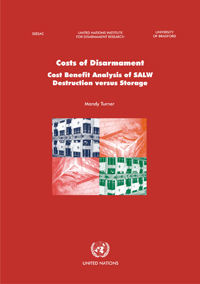The Cost Benefit Analysis Model was developed in order to allow states to estimate the real costs involved in ammunition and weapon storage. It allows each storage depot to calculate its full running costs, and how much time it would take to break even in terms of the alternative costs of destruction. It also allows a comparison of the potential benefits from sale versus the costs of storage. The financial accounting systems of many states are often not sophisticated enough to identify these true costs. This model will help them to do this. The model is in the form of an Excel spreadsheet, which comes on the accompanying CD-ROM.
The model was developed with assistance from SEESAC and the UK Ministry of Defence. It was tested in Bosnia and Herzegovina (BiH). As BiH is currently undergoing major demilitarization and armed forces restructuring, this study is timely, particularly because BiH is one of the states in the region that has expressed a desire to sell its surplus weapons and ammunition rather than destroy it. The initial investment costs of bringing BiH storage depots up to NATO standards are high. In addition, the level of investment required each year to maintain these standards is high. While this model was originally commissioned to help states in South-eastern Europe make decisions about the future of their surplus stocks, the model is applicable to all other regions. It is hoped that it will be a useful tool for all ministries of defence wishing to compare the costs of storage versus destruction, and the potential benefits from sale versus the costs of storage.
Citation: Mandy Turner (2006). "Costs of Disarmament: Cost Benefit Analysis of SALW Destruction Versus Storage", UNIDIR, Geneva.
